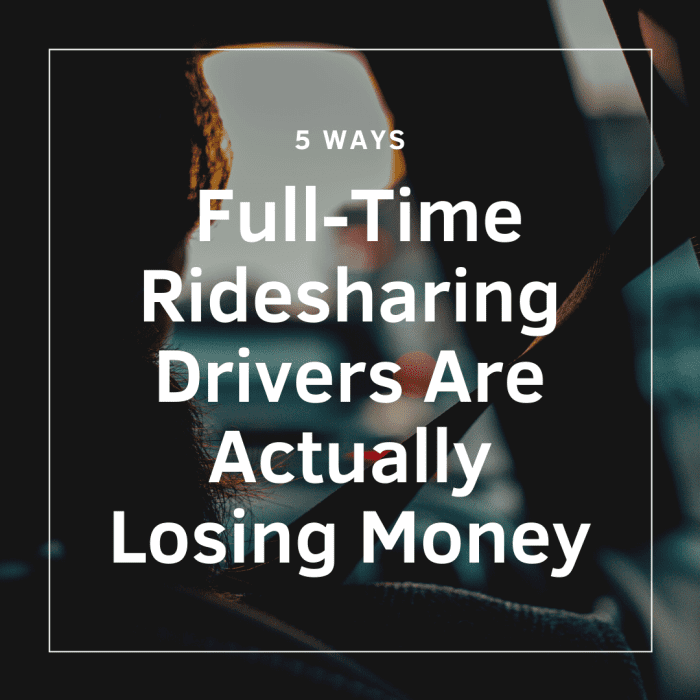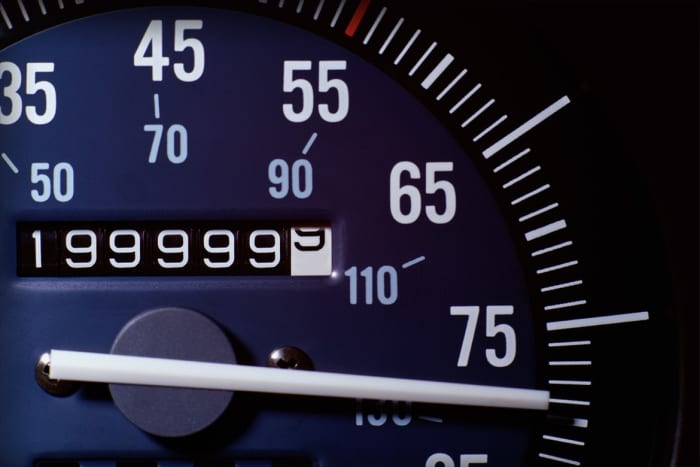How to Become a Racecar Driver With No Money
Experienced Uber and Lyft driver in Los Angeles for the last three years.

Ridesharing drivers don't earn as much as you'd think.
Canva
Today is my third anniversary driving for Uber and my 21st month driving for Lyft. Since day one, I've kept a log of how much I earn from driving and how much I spend as a rideshare driver. Even though the overall income I make is generally greater than the cost and expenses of driving, I did notice that since early 2018 my month to month profit has dropped significantly.
After putting the monthly expenses against my monthly earnings, I am still making a small profit month to month that keeps me from being late on my bills and homeless. However, a recent video released by Fusion makes me wonder how much longer it will be before I find myself living under a bridge in Los Angeles thanks to Uber and Lyft "more affordable" prices. Even more frightening, I found out I am actually losing money and wasting my time by driving full-time.
After doing some research, I learned that I am not the only driver experiencing losses as my peers nationwide also seem to be in a similar situation. This article is a summary of my experience as a driver in combination with the experiences of other drivers I know.
What It Costs to Be a Full-Time Driver
Although the cost of being a rideshare driver varies from city to city, all Uber and Lyft drivers have to pay for certain costs to keep their account active and their cars running. For instance, drivers have to pay for car insurance, gasoline, car-washing and detailing, tires, and other vehicle maintenance. In addition, some drivers do not own the vehicle they drive; therefore, they have to pay for monthly car rental fees, lease cost, or car loan payments. In other words, there is a high cost for driving a vehicle when you add vehicle insurance, fuel, cleaning, maintenance, and car payments altogether.
How Full-Time Drivers Earn Money
Drivers earn money from every trip they complete as they get paid a fixed amount per mile and per minute. The monetary advantage of being a full-time driver is that you can actually make money without driving. That is correct! Both Uber and Lyft offer more experienced drivers weekly incentives for completing a certain amount of rides within a time frame. The requirements for earning these incentives are generally easy to meet as they can be completed within a few days and only require a small number of rides. I usually complete the ride requirements for both Uber and Lyft, which helps me bring home additional income every week.
In addition to the weekly incentives, Uber and Lyft offer surge pricing for accepting and completing rides during rush hours, peak times, and public events. HOWEVER, any veteran driver will tell you that the bonuses and incentives Uber and Lyft now offer are much smaller than what they used to be.
Why Full-Time Drivers are Actually Losing Money
1. Less Earnings per Trip
As the cost for riders become more affordable, the earnings for drivers become smaller. As I mentioned earlier, I keep a weekly and monthly log of how much I spend and how much I earn as a rideshare driver. The numbers do not lie: over time, my month to month profit is becoming smaller and smaller.
I tried to look for more information online, and I found out that Uber lowered the cost of their rides by a significant percent, which means drivers now earn less than before. In addition, this 2018 Uber introduced the Express Pool, a new way for riders to save money. Express Pool allows riders to save money by walking toward a pick-up spot. This new feature makes picking up passengers easier, but at the same time, the lowered price of this service means that drivers will be earning less.

High-mileage driving is poorly compensated.
Read More From Toughnickel
2. Drivers Are Driving More, but Making the Same
In the video released by Fusion, Uber says that drivers' earnings have remained stable despite the lower cost riders pay for riding on Uber trips. As an experienced driver, I can tell you that this statement is true: my earnings remain the same because I keep driving more to compensate for the price cut. Uber does not admit drivers have to spend more time on the road to compensate for the price drop.
Mathematically, it would not make any sense to lower the prices of a service and expect the earnings to remain the same, unless customers pay for more services and that increase in service requests compensates for the price drop. In other words, drivers have to drive more time in order to keep their earnings stable in the face of dropping rider rates.
A Real-Life Example: The video clip shows the story of an Uber-Black driver who works 63.5 hours and makes $351 a week. The $351 weekly income is what is left over after Uber takes their share of the pie. Although $351 is still a decent amount, I do not believe it is worth almost 64 hours of your life because any other part-time job would pay that same amount for half the time. I can totally relate to this unfortunate driver because I am driving more hours but barely making the same.
3. Opportunity Costs
The way I see it, full-time Uber and Lyft drivers are losing money not because the cost of driving is greater than the driver's earnings, but because of the opportunity cost of all the time, rideshare drivers waste on the road. The time they spend driving for these companies does not compensate them fairly; in addition, those drivers lose the opportunity of doing something more productive with their time because they have to drive for more hours to earn the same.
4. Fewer Ride Requests
As the Fusion video shows, "there are too many people looking for too little business." As a result, wait times for ride requests have increased in time in my area. Sometimes I still get one ride request after another with no waiting time in between, but this is very rare. Usually, I park and wait for several minutes until a ride request comes.
Tip for Drivers: Take advantage of the Lyft and Uber rider apps feature that shows you how many drivers are nearby. Open the app and find out how many drivers are near the spot where you are parked. If there are several drivers near, then the wait time might be much longer. If so, I advise you to move to another location.
5. Predatory Leases, Rentals, and Car Loans
This applies to those drivers, including me, who do not own the car they drive and have to rent, loan, or lease their car.
Uber and Lyft opened easing and renting options are available for those drivers who need a four-door vehicle in order to drive for these rideshare companies. Each company has its own prices and rates, but both options are quite expensive.
On the bright side, however, drivers may return the vehicle when they no longer need it as they are not obligated to commit to contracts. In addition, insurance and maintenance are included in the rental price, which helps drivers save time-consuming and costly maintenance and insurance premiums. Also, if the vehicle the driver rented is experiencing mechanical issues, the driver may easily just rent a different car next time.
Although renting or leasing a vehicle may seem like the best choice, the daily and weekly rental cost is very high. Making car loan payments month to month is far cheaper, but drivers are obligated to stick to lengthy loan contracts.
The bottom line: Uber and Lyft used to be great platforms where drivers could earn thousands of dollars for a few hours of their time and a couple hundred miles on their cars. Nowadays, however, drivers' time and the miles they put on their cars are poorly compensated. This is the result of ride prices becoming more affordable, new drivers on the road every day, new ride services like Uber Express Pool, and predatory renting and leasing companies that aim to rip off drivers' earnings.
This article is accurate and true to the best of the author's knowledge. Content is for informational or entertainment purposes only and does not substitute for personal counsel or professional advice in business, financial, legal, or technical matters.
How to Become a Racecar Driver With No Money
Source: https://toughnickel.com/self-employment/Five-Ways-Full-Time-Ridesharing-Drivers-are-Actually-Losing-Money